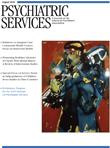Letter
Changes in Prescription of Psychotropics After an Earthquake in Italy
To the Editor: On April 6, 2009, at 3:32 a.m., an earthquake struck L'Aquila, Italy, a town with a population of 72,000 residents and a health district of 105,000 residents. The L'Aquila earthquake (magnitude 6.3) caused the deaths of 309 people. More than 1,000 individuals were injured, and 66,000 were displaced. This disaster provided a unique opportunity to explore the effects of severe stress and its treatment ( 1 , 2 ). In this study we sought to determine whether the survivors experienced symptoms that led to an increase in psychotropic drug prescription in the six months after the earthquake.
We obtained data from the Pharmacy Unit of the Health Care Public System, which monitors reimbursed drug prescriptions for people living in a certain area, even those who have been displaced, through their Social Security Number. Information on prescriptions of antidepressants and antipsychotics was obtained for one year before and six months after April 6, 2009. Data for benzodiazepines were not obtained because these prescriptions are not reimbursed. To control for possible seasonal variation in drug prescription, we analyzed two comparable half-years—April 1 to September 30 in 2008 and 2009. Data were collected with ATC/DDD methodology (Anatomical Therapeutic Chemical Classification System with defined daily doses) ( www.whocc.no ). Chi square analysis was used to determine the significance of differences between the two periods.
In the population of 105,000 residents, the number for whom antidepressants (ATC N06 A) were prescribed increased from 6,350 to 6,836 ( χ2 =17.91, df=1, p<.001). For antipsychotics (ATC N05 A) the number increased from 1,646 to 2,551 ( χ2 =195.14, df=1, p<.001). The higher percentage increase in antipsychotic prescription (55% versus 8%) could be attributable to off-label indications. Prescription of these agents should be monitored, and guidelines for primary care providers should recommend caution.
These data confirm the pervasive effects of disasters on the mental health of a population ( 2 ) and demonstrate the need to include mental health as a key component of public health response to mass traumas.
Acknowledgments and disclosures
The authors report no competing interests.
1. Stratta P, Rossi A: Subjective adjustment of individuals with psychiatric disorders in the aftermath of the L'Aquila earthquake. American Journal of Psychiatry 167:352–353, 2010Google Scholar
2. Di Maggio C, Galea S, Madrid PA: Population psychiatric medication prescription rates following a terrorist attack. Prehospital and Disaster Medicine 22:479–484, 2007Google Scholar



